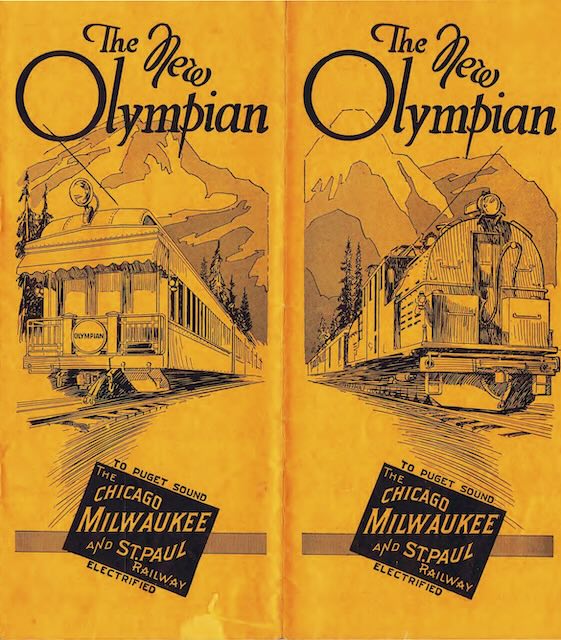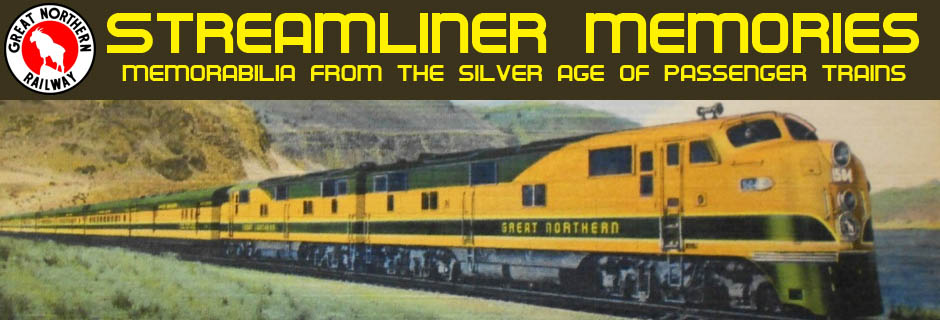We’ve previously seen a glorious full-color booklet advertising the 1927 edition of the Olympian. That booklet was dated July 15 for a train that would first enter service on August 1.
 Click any image to download a 5.2-MB PDF of this 8-page booklet.
Click any image to download a 5.2-MB PDF of this 8-page booklet.
Today we have a more prosaic booklet about the train that was dated June 30th. “The Milwaukee Road invites you to a critical inspection of The New Olympian and will gladly welcome constructive suggestions for its further improvement,” says the booklet. Apparently, the new train did a tour of major cities and this booklet was handed out to members of the public, while the color one was probably reserved for the press and travel agents.
While new is always good, the train made only modest improvements over the old Olympian. While many of the sleeping cars on the old train had 10 sections, two compartments, and one drawing room, the new cars had either 10 sections, one compartment, and one drawing room or 8 sections, two compartments, and a drawing room. Either way left more space for lounges shared by the passengers in the sections.
The old Olympian was the first all-steel transcontinental train to the West Coast. By 1927, the premiere trains of most major railroads had caught up to this standard. To maintain its aura of technological superiority, the Milwaukee used roller bearings in all of the cars of the new train (as it had already done for its premiere Chicago-Minneapolis train, the Pioneer). The cars were also equipped with friction buffers that “eliminate the slack usually found between the cars of a standing train.”
“The combination of Roller Bearings and Friction Buffers means a gentleness in starting and stopping and an effect of easy gliding motion that heretofore have never been approached in the operation of passenger trains,” says the booklet. “No jars, jerks or jolts!”
In truth, the real benefits of roller bearings were to the railroad in the form of increased reliability and reduced operating costs. Few if any passengers would be able to tell whether the cars they were riding on had friction bearings or roller bearings. But this was one way the railroad showed passengers that its new train was more advanced than any other train serving the Northwest.
In keeping with the standards of the times, the observation-lounge car was equipped with a barber shop with a shower-bath for men and a women’s lounge with a shower-bath for women. The car also had a smoking room with seating for 11, which only left room for 16 seats in the observation lounge. People wanting to see scenery could step out onto the rear platform, which had room for about a dozen standees and had a floodlight so people could view the scenery at night.
This booklet is from Michael Sol’s collection. I’ve straightened up some of the pages that had been scanned crooked but otherwise made no major changes. My thanks to Mr. Sol for permitting me to use this piece.
